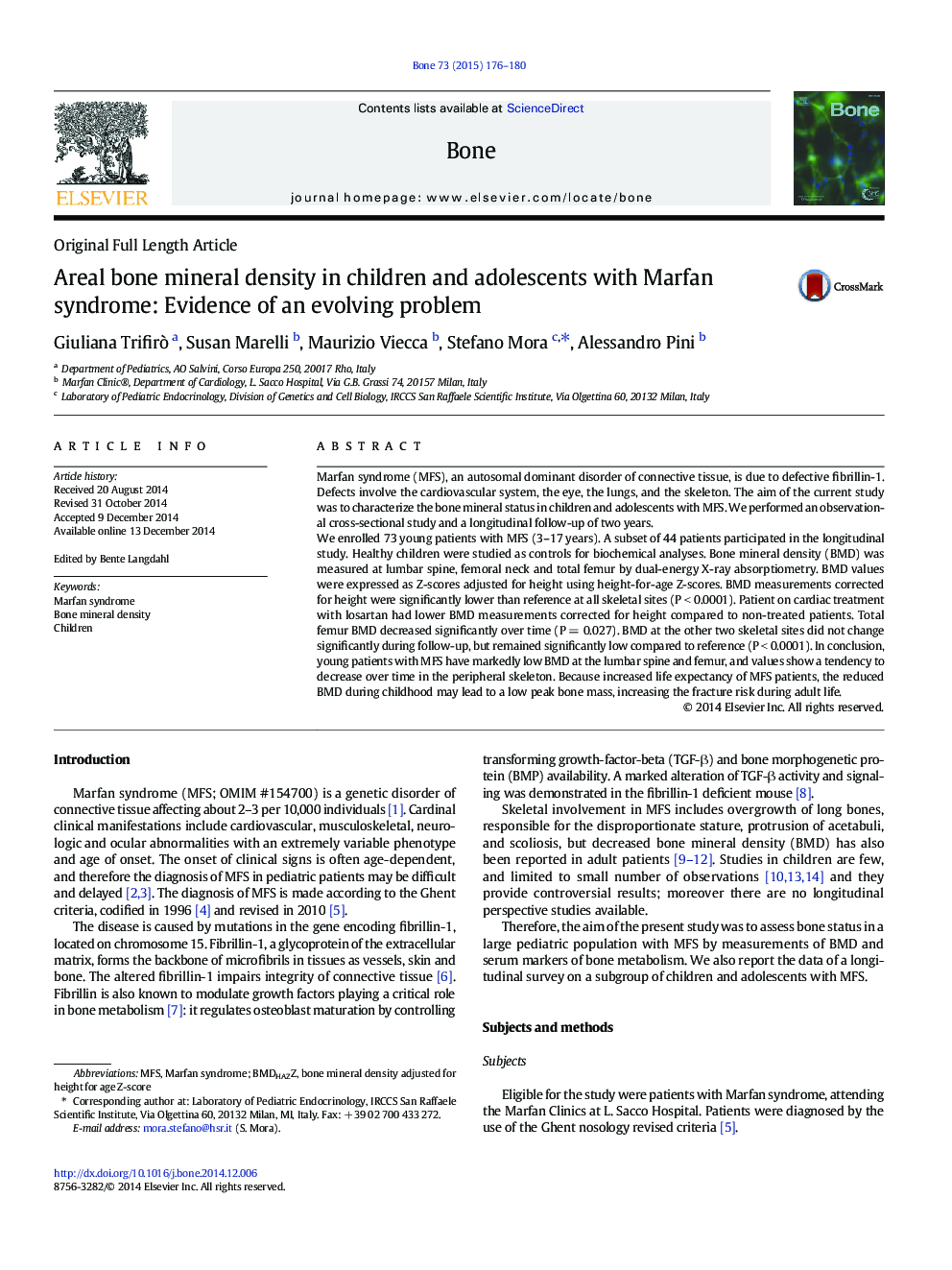| Article ID | Journal | Published Year | Pages | File Type |
|---|---|---|---|---|
| 5889959 | Bone | 2015 | 5 Pages |
â¢Marfan syndrome (MFS) is a genetic disorder of connective tissue, which leads, among others, to skeletal defects.â¢We found that MFS children and adolescents have markedly low bone mineral density in the axial and peripheral skeleton.â¢Young patients on cardiac treatment had lower bone mineral density measurements at all skeletal site than non-treated patients.â¢A two-year follow-up showed that bone mineral density of the total femur decreased significantly.
Marfan syndrome (MFS), an autosomal dominant disorder of connective tissue, is due to defective fibrillin-1. Defects involve the cardiovascular system, the eye, the lungs, and the skeleton. The aim of the current study was to characterize the bone mineral status in children and adolescents with MFS. We performed an observational cross-sectional study and a longitudinal follow-up of two years.We enrolled 73 young patients with MFS (3-17Â years). A subset of 44 patients participated in the longitudinal study. Healthy children were studied as controls for biochemical analyses. Bone mineral density (BMD) was measured at lumbar spine, femoral neck and total femur by dual-energy X-ray absorptiometry. BMD values were expressed as Z-scores adjusted for height using height-for-age Z-scores. BMD measurements corrected for height were significantly lower than reference at all skeletal sites (PÂ <Â 0.0001). Patient on cardiac treatment with losartan had lower BMD measurements corrected for height compared to non-treated patients. Total femur BMD decreased significantly over time (PÂ =Â 0.027). BMD at the other two skeletal sites did not change significantly during follow-up, but remained significantly low compared to reference (PÂ <Â 0.0001). In conclusion, young patients with MFS have markedly low BMD at the lumbar spine and femur, and values show a tendency to decrease over time in the peripheral skeleton. Because increased life expectancy of MFS patients, the reduced BMD during childhood may lead to a low peak bone mass, increasing the fracture risk during adult life.
